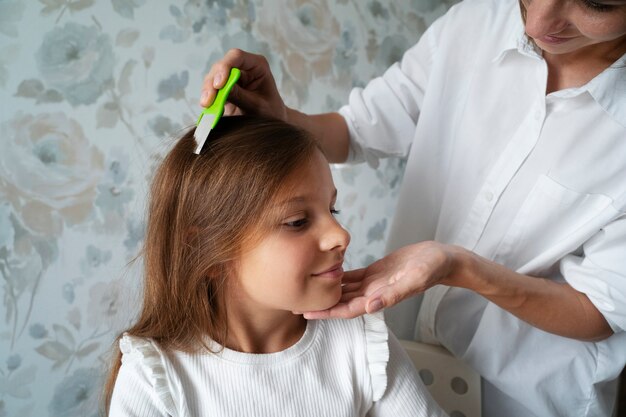Lice infestation, commonly known as head lice, is a prevalent condition among children, especially those aged 3 to 11 years. These tiny parasites thrive on human blood and can lead to significant discomfort and embarrassment. Early detection is essential to prevent the spread and manage the infestation effectively. Here’s a guide to recognizing the early signs and symptoms of lice infestation in children.
1. Intense Itching
One of the most noticeable early signs of a lice infestation is intense itching on the scalp, neck, and behind the ears. This itching is often caused by an allergic reaction to lice saliva, which can lead to constant scratching. Children may complain of discomfort, and parents should be alert to any signs of persistent itching.
2. Red or Inflamed Scalp
As a result of frequent scratching, the scalp may become red, inflamed, or even develop sores. In some cases, these sores can become infected, leading to additional complications. Observing any unusual redness or irritation on your child’s scalp can be an early indication of lice.
3. Visible Lice or Nits
The most definitive sign of lice is the presence of lice or their eggs, known as nits. Adult lice are about the size of a sesame seed and can be difficult to spot. However, nits are easier to identify; they are small, oval-shaped, and usually yellow or white, firmly attached to the hair shafts close to the scalp. Regularly checking your child’s hair, especially behind the ears and at the nape of the neck, can help catch an infestation early.
4. Tickling Sensation
Children may describe a tickling feeling on their scalp, which can be an early sign of lice. This sensation is often due to the movement of the lice as they crawl through the hair. If your child complains about a persistent tickling sensation, it’s worth investigating further.
5. Frequent Complaints of Discomfort
Along with itching, children might express general discomfort or irritation, especially when their hair is brushed or touched. If your child is unusually fidgety or seems bothered by their hair, it may be a sign of lice.
6. Difficulty Sleeping
Lice are most active at night, leading to disrupted sleep patterns in children. If your child is having trouble sleeping or is unusually restless at night, it may be related to discomfort from lice.
7. Checking for Secondary Infections
In some cases, excessive scratching can lead to secondary bacterial infections. If you notice pus-filled sores or increased redness around scratched areas, it’s important to consult a healthcare professional for appropriate treatment.
Early recognition of lice infestation in children is crucial for effective management and prevention of spread. If you observe any of these early signs and symptoms, it’s essential to take action promptly. Regularly checking your child’s scalp and hair, maintaining good hygiene, and educating them about lice can help minimize the risk of infestation. If lice are detected, over-the-counter treatments are available, but consulting a healthcare provider for guidance is always recommended. With timely intervention, you can help alleviate discomfort and ensure a lice-free environment for your child.










